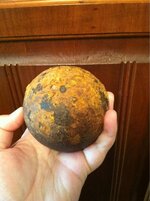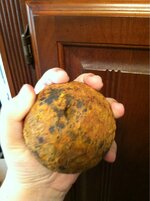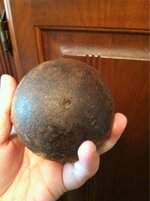Hunter612
Bronze Member
- Mar 28, 2013
- 1,012
- 218
- Detector(s) used
- Garrett Ace 400
Garrett Pro-Pointer
- Primary Interest:
- All Treasure Hunting
I have this small heavy metal ball. I don't know if it is a cannon ball or not. Anybody know? Thanks for looking!






